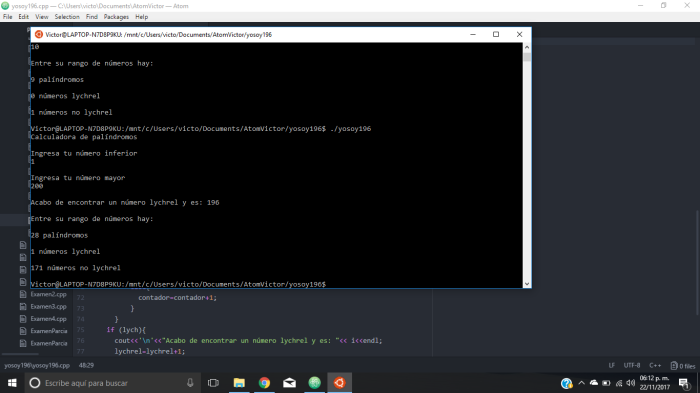--Originally published at Victor´s Spot
This task was kind of large, but I finally did it with the help of Juan Carlos Ron Varela and Rogelio Felix Gamboa.

The job consisted on
“Create a program that asks the user for two pieces of data: The lower bound of the sequence & The upper bound of the sequence. Then you check the values from the lower bound (inclusive) to the upper bound (inclusive) and make a report of them. During the analysis of each number, if a Lychrel number is found it should be reported immediately with something like “Found a Lychrel number: 196” (Bauer, 2017).
I believe I develope on this WSQ the following mastery topics from Kenscourses.com:
- Nesting of conditional statements (ifs inside ifs)
- Nested loops
I belived that i developed those because the code requires a combination of loops and conditional because it requires of that to make it worth.




